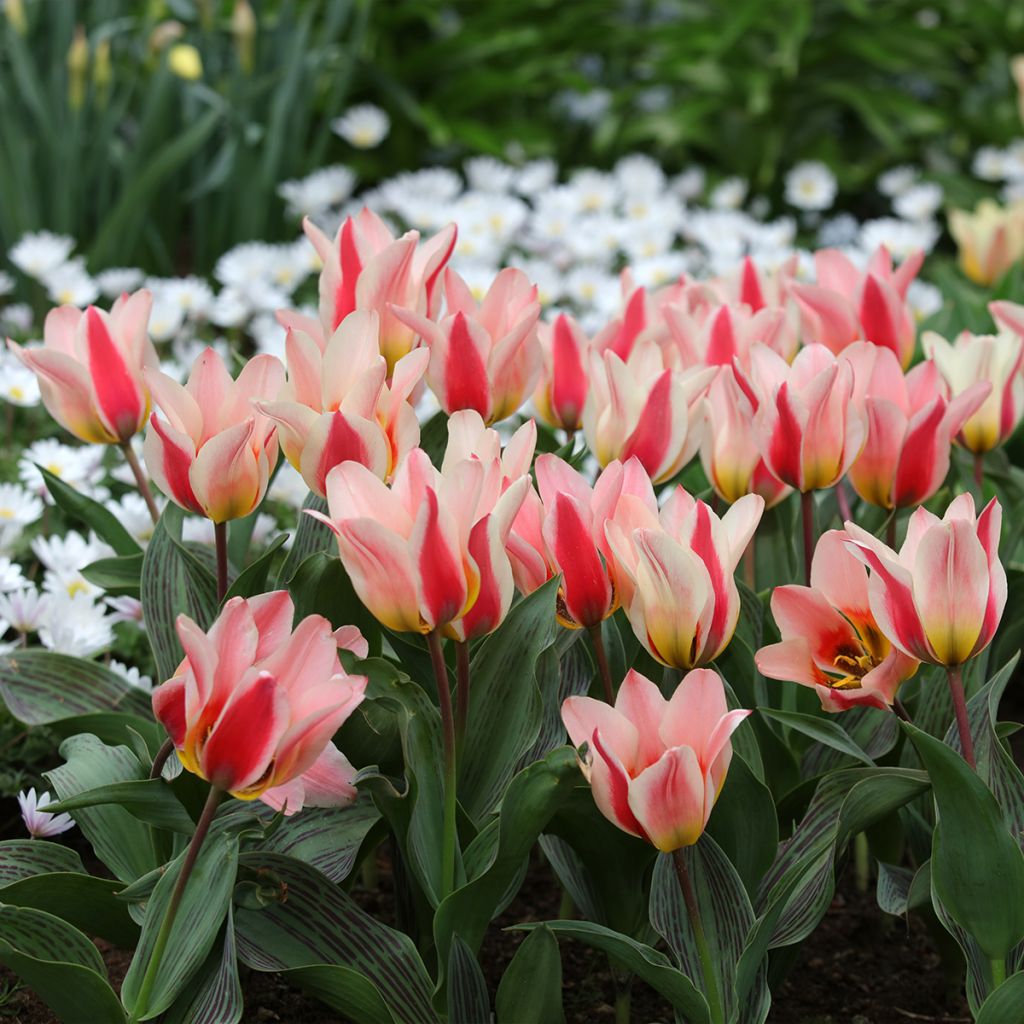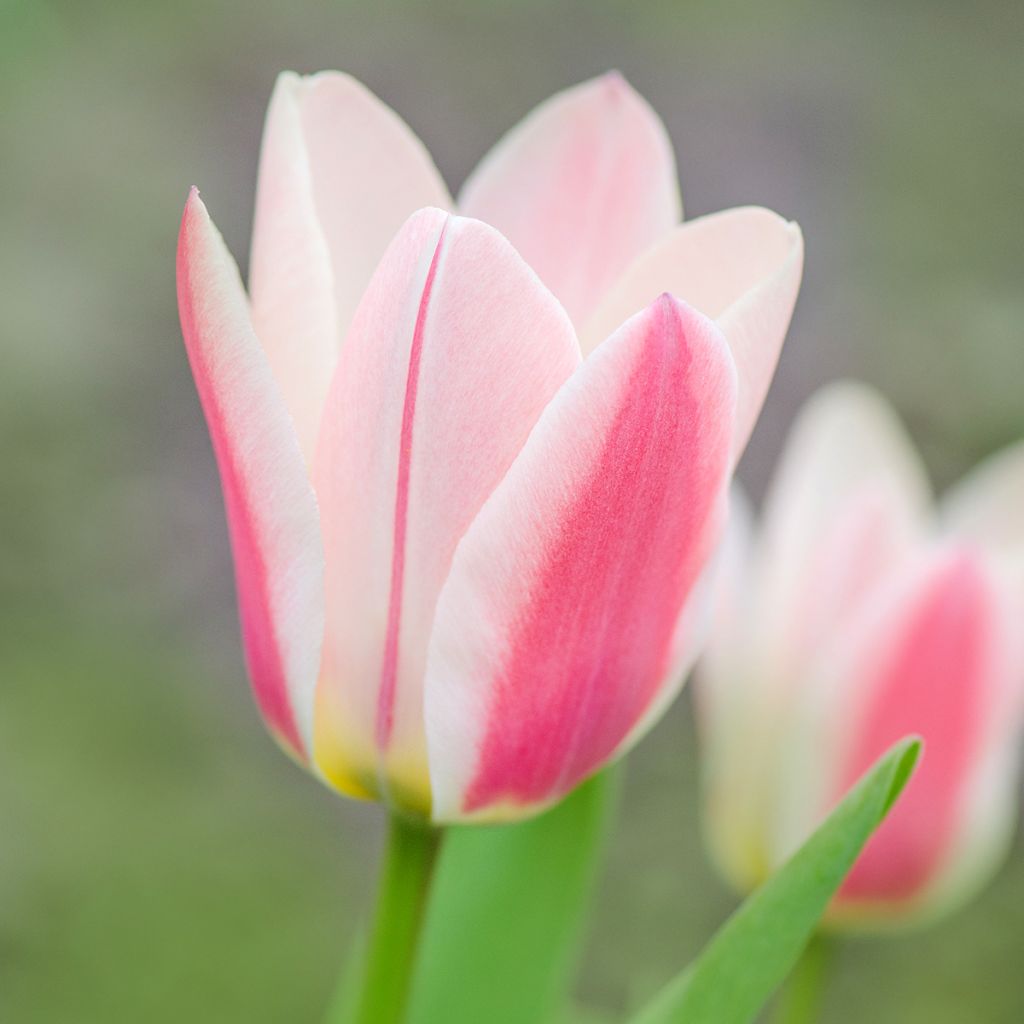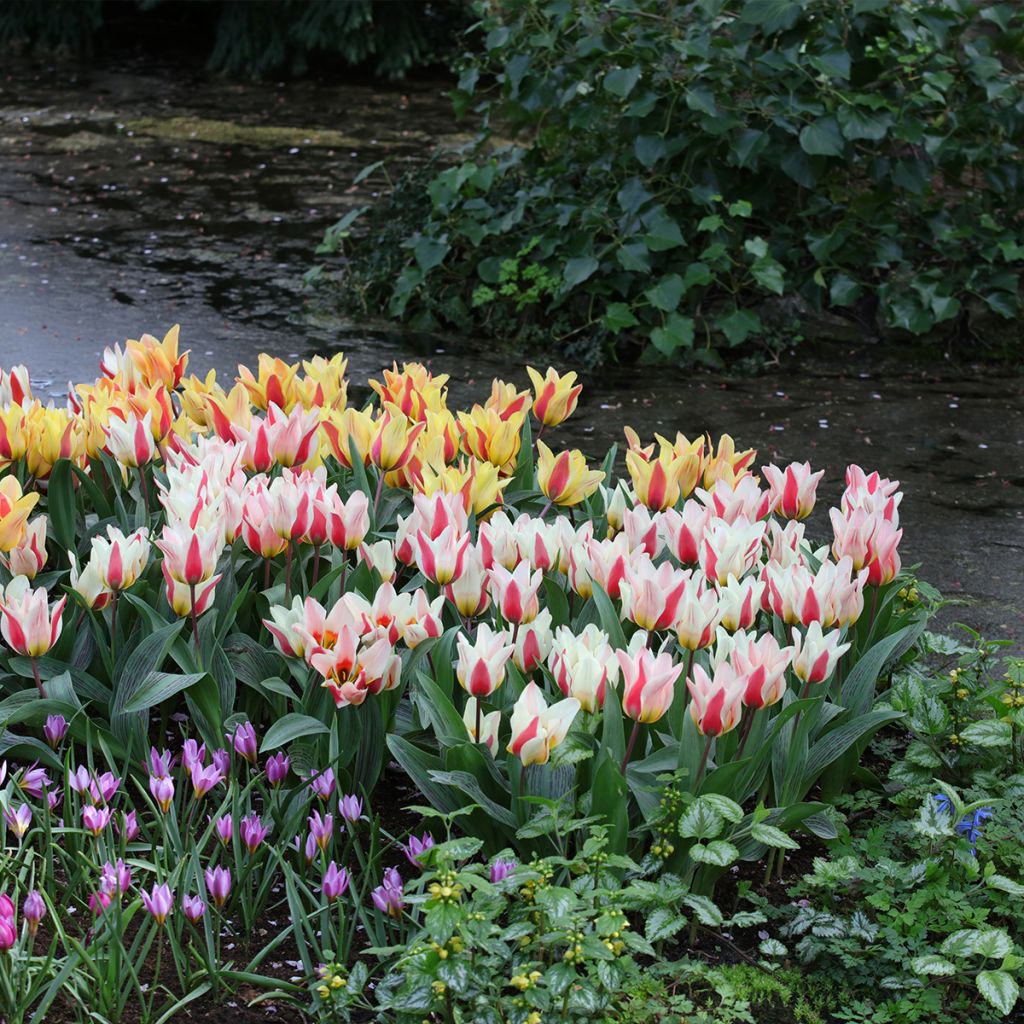

Tulipa greigii 'Mary Ann'


Tulipa greigii 'Mary Ann'


Tulipa greigii 'Mary Ann'


Tulipa greigii 'Mary Ann'


Tulipa greigii 'Mary Ann'


Tulipa greigii 'Mary Ann'


Tulipa greigii 'Mary Ann'


Tulipa greigii 'Mary Ann'


Tulipa greigii 'Mary Ann'
Tulipa greigii 'Mary Ann'
Tulipa greigii Mary Ann
Tulipe botanique greigii, Tulipe de Greig
This plant carries a 6 months recovery warranty
More information
We guarantee the quality of our plants for a full growing cycle, and will replace at our expense any plant that fails to recover under normal climatic and planting conditions.
From €5.90 for pickup delivery and €6.90 for home delivery
Express home delivery from €8.90.
Does this plant fit my garden?
Set up your Plantfit profile →
Description
Tulipa greigii 'Mary Ann' is a dwarf variety, early, full of cheerfulness, whose colour changes during flowering. Its flower welcomes a beautiful range of red, pink, yellow and blush white tones, and its large leaves are beautifully marbled with purple-brown. It shows excellent performance in flower beds and allows for creating beautiful splashes of colour at the end of winter. It proves to be robust, reliable and faithful, and not demanding. One of the first smiles of spring!
Tulipa greigii 'Mary Ann' belongs to the Liliaceae family. The botanical species Tulipa greigii was the first to be cultivated from wild bulbs, which were brought back from Uzbekistan to Germany in 1871. It is actually native to Central Asia and northeastern Iran. This tulip has given birth to many cultivars, including the pretty 'Mary Ann', still cultivated since 1955. This small tulip will not exceed 25cm (10in) in height when in bloom. Its foliage is bluish green, wide, and marbled with brown spots. The multicoloured flowers appear in March, more or less early depending on the climate. They open widely like stars, revealing a creamy pink interior, an orange, brown and yellow throat, and golden stamens. They bloom in the sun and close when it hides. The foliage yellows and dries a few weeks after flowering, while the bulb goes into dormancy.
Greigii botanical tulips do not degenerate over time like large-flowered tulips. They naturalize and can remain in place for several years without special maintenance and thrive in borders and rockeries. To create colourful scenes, they can be associated with various small bulb plants: Crocus, Ipheion uniflorum, Anemone blanda, small-flowered Daffodils, Muscaris, Puschkinia, Cyclamen coum, Erythronium pagoda, Leucojum vernum, snowdrop, Scilla sibirica... These tulips are unrivaled for bringing the colour of spring to pots or sunny gardens.
Report an error about the product description
Plant habit
Flowering
Foliage
Botanical data
Tulipa
greigii
Mary Ann
Liliaceae
Tulipe botanique greigii, Tulipe de Greig
Cultivar or hybrid
Planting and care
Plant the bulbs in autumn, from September to December, at a depth of 10cm (4in), spacing them 10cm (4in) apart. The planting should be done in ordinary soil, slightly acidic, neutral, or slightly alkaline, loose, well-worked, and well-draining. Never add undecomposed manure or compost to the planting soil, as this could cause the bulbs to rot. Tulips will grow well in moist to dry soil. Plant them in a good, sunny or partially shaded spot.
After flowering, their foliage becomes unsightly. We recommend planting Heucheras, Foamflowers, Brunneras, Bleeding Hearts, Cypress Spurge, at the forefront of your flower beds. Their foliage will enhance the colors of your tulips, and throughout the season, they will elegantly conceal their yellowing leaves.
Planting period
Intended location
Care
This item has not been reviewed yet - be the first to leave a review about it.
Haven't found what you were looking for?
Hardiness is the lowest winter temperature a plant can endure without suffering serious damage or even dying. However, hardiness is affected by location (a sheltered area, such as a patio), protection (winter cover) and soil type (hardiness is improved by well-drained soil).

Photo Sharing Terms & Conditions
In order to encourage gardeners to interact and share their experiences, Promesse de fleurs offers various media enabling content to be uploaded onto its Site - in particular via the ‘Photo sharing’ module.
The User agrees to refrain from:
- Posting any content that is illegal, prejudicial, insulting, racist, inciteful to hatred, revisionist, contrary to public decency, that infringes on privacy or on the privacy rights of third parties, in particular the publicity rights of persons and goods, intellectual property rights, or the right to privacy.
- Submitting content on behalf of a third party;
- Impersonate the identity of a third party and/or publish any personal information about a third party;
In general, the User undertakes to refrain from any unethical behaviour.
All Content (in particular text, comments, files, images, photos, videos, creative works, etc.), which may be subject to property or intellectual property rights, image or other private rights, shall remain the property of the User, subject to the limited rights granted by the terms of the licence granted by Promesse de fleurs as stated below. Users are at liberty to publish or not to publish such Content on the Site, notably via the ‘Photo Sharing’ facility, and accept that this Content shall be made public and freely accessible, notably on the Internet.
Users further acknowledge, undertake to have ,and guarantee that they hold all necessary rights and permissions to publish such material on the Site, in particular with regard to the legislation in force pertaining to any privacy, property, intellectual property, image, or contractual rights, or rights of any other nature. By publishing such Content on the Site, Users acknowledge accepting full liability as publishers of the Content within the meaning of the law, and grant Promesse de fleurs, free of charge, an inclusive, worldwide licence for the said Content for the entire duration of its publication, including all reproduction, representation, up/downloading, displaying, performing, transmission, and storage rights.
Users also grant permission for their name to be linked to the Content and accept that this link may not always be made available.
By engaging in posting material, Users consent to their Content becoming automatically accessible on the Internet, in particular on other sites and/or blogs and/or web pages of the Promesse de fleurs site, including in particular social pages and the Promesse de fleurs catalogue.
Users may secure the removal of entrusted content free of charge by issuing a simple request via our contact form.
The flowering period indicated on our website applies to countries and regions located in USDA zone 8 (France, the United Kingdom, Ireland, the Netherlands, etc.)
It will vary according to where you live:
- In zones 9 to 10 (Italy, Spain, Greece, etc.), flowering will occur about 2 to 4 weeks earlier.
- In zones 6 to 7 (Germany, Poland, Slovenia, and lower mountainous regions), flowering will be delayed by 2 to 3 weeks.
- In zone 5 (Central Europe, Scandinavia), blooming will be delayed by 3 to 5 weeks.
In temperate climates, pruning of spring-flowering shrubs (forsythia, spireas, etc.) should be done just after flowering.
Pruning of summer-flowering shrubs (Indian Lilac, Perovskia, etc.) can be done in winter or spring.
In cold regions as well as with frost-sensitive plants, avoid pruning too early when severe frosts may still occur.
The planting period indicated on our website applies to countries and regions located in USDA zone 8 (France, United Kingdom, Ireland, Netherlands).
It will vary according to where you live:
- In Mediterranean zones (Marseille, Madrid, Milan, etc.), autumn and winter are the best planting periods.
- In continental zones (Strasbourg, Munich, Vienna, etc.), delay planting by 2 to 3 weeks in spring and bring it forward by 2 to 4 weeks in autumn.
- In mountainous regions (the Alps, Pyrenees, Carpathians, etc.), it is best to plant in late spring (May-June) or late summer (August-September).
The harvesting period indicated on our website applies to countries and regions in USDA zone 8 (France, England, Ireland, the Netherlands).
In colder areas (Scandinavia, Poland, Austria...) fruit and vegetable harvests are likely to be delayed by 3-4 weeks.
In warmer areas (Italy, Spain, Greece, etc.), harvesting will probably take place earlier, depending on weather conditions.
The sowing periods indicated on our website apply to countries and regions within USDA Zone 8 (France, UK, Ireland, Netherlands).
In colder areas (Scandinavia, Poland, Austria...), delay any outdoor sowing by 3-4 weeks, or sow under glass.
In warmer climes (Italy, Spain, Greece, etc.), bring outdoor sowing forward by a few weeks.


































